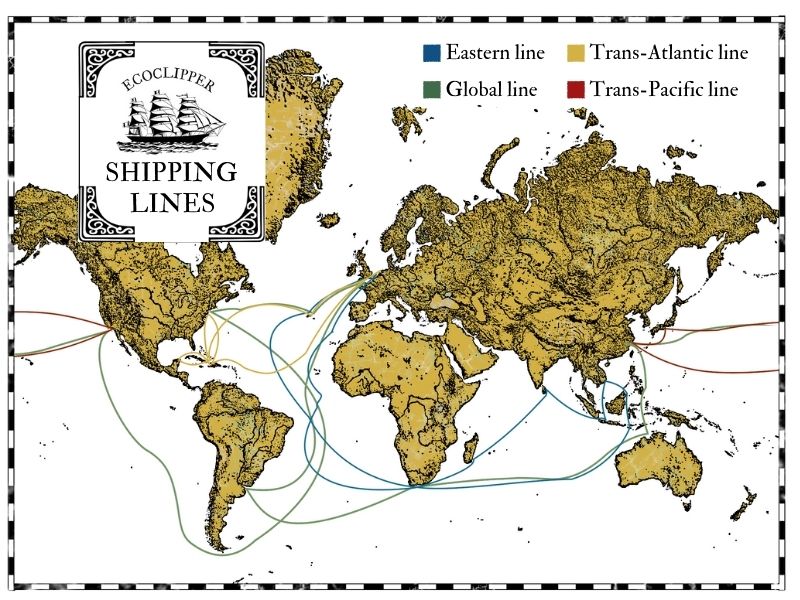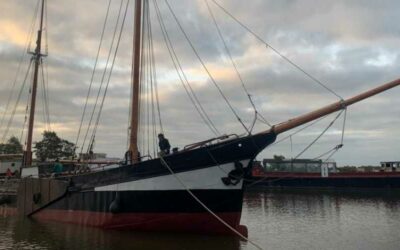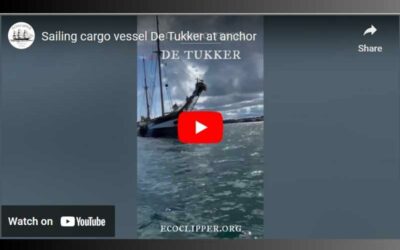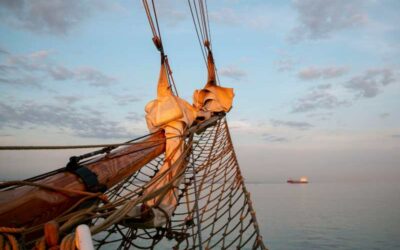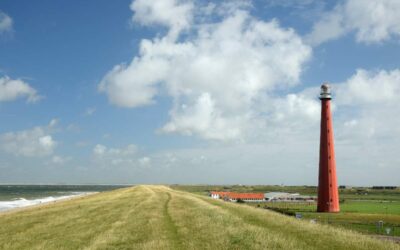As you might already know, EcoClipper has been working on its four shipping lines with fixed geographical schedules, through which EcoClipper vessels will be able to operate transporting cargo and travelers. The four routes EcoClipper is planning for the transport of goods and passengers are: The Trans-Atlantic Line, The Trans-Pacific Line, The Global Line and The Eastern Line.
The EcoClipper team has been focusing during the last few weeks specifically on the Eastern Route, trying to find the optimal destinations to structure the final, most profitable route for the vessels to operate through.
What is the Eastern Trade Route?
The Eastern Trade Route will be expected to be the busiest EcoClipper Route and one of the most important, this is due to the monopoly of production of materials and/or goods that is present in some countries in the area of this route. Some of the countries that would be included in this route are some of the principal producers and exporters of materials that are perfect for sail transport, which is why this route is very important for EcoClipper.
According to the research done by the team working on the operation and structure of this route, the production of goods such as cocoa butter beans, coffee, tea, cotton, textiles, metals and minerals, wine, raw oils and others are the most abundant in this area.
The EcoClipper team is currently working on structuring the best schedule to be able to transport all of these goods to and from different destinations. The transportable goods by sail EcoClipper is mostly interested in carrying dictate the destinations of the route.
If EcoClipper focuses on transporting some of the previously mentioned goods, some of the key countries to include in the Eastern Route would be: South Africa, Kenya, Ethiopia, Indonesia, Portugal, Chile, Brazil, Peru, Colombia, Mexico, India, etc, since they are some of the biggest producers of these sail-transportable goods.
Post COVID-19 Implications
As a decisive factor for destinations in the route, the EcoClipper Team is working on contacting possible partners and clients to export goods with and to!
This way, the company can decide which destinations would be more profitable for the route and which not. Along with this research, the team is taking into account the need for adaptation to post COVID-19 implications, which includes sanitary measures for cargo and passengers, restrictions in certain countries, vaccination requirements, etc.
However, it is known that transport and travel by sail can offer advantages in combating or even preventing pandemics. After all, the journey time of sailing ships between the continents is generally longer than the incubation period of possible contagious diseases such as COVID-19, which makes its spreading easier to control.
The team is and will continue to work hard on all of its routes to make EcoClipper’s operation happen as soon as possible!
If you are interested in new updates about The Eastern Route and the other 3 routes, do not hesitate to subscribe to our newsletter so you do not miss any important information! (https://ecoclipper.org/newsletter/)
If you wish to work with EcoClipper through this Route, do not hesitate to contact us here: https://ecoclipper.org/contact/
